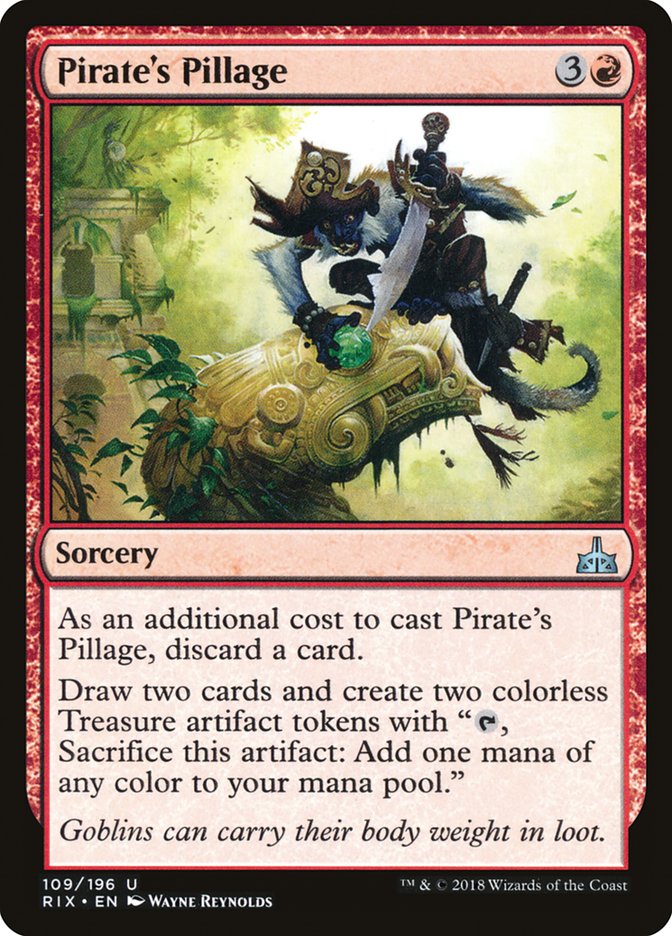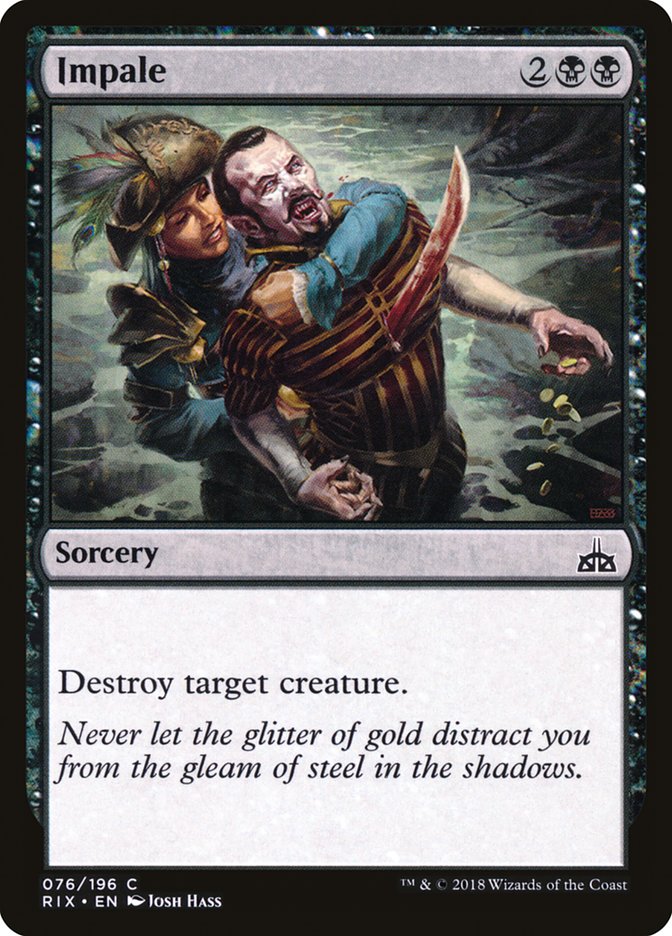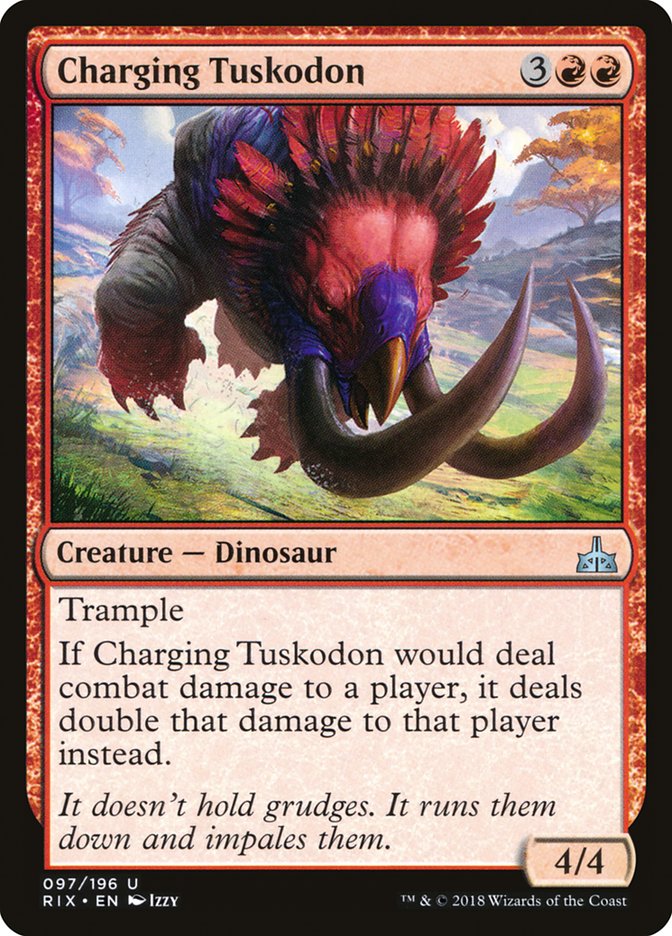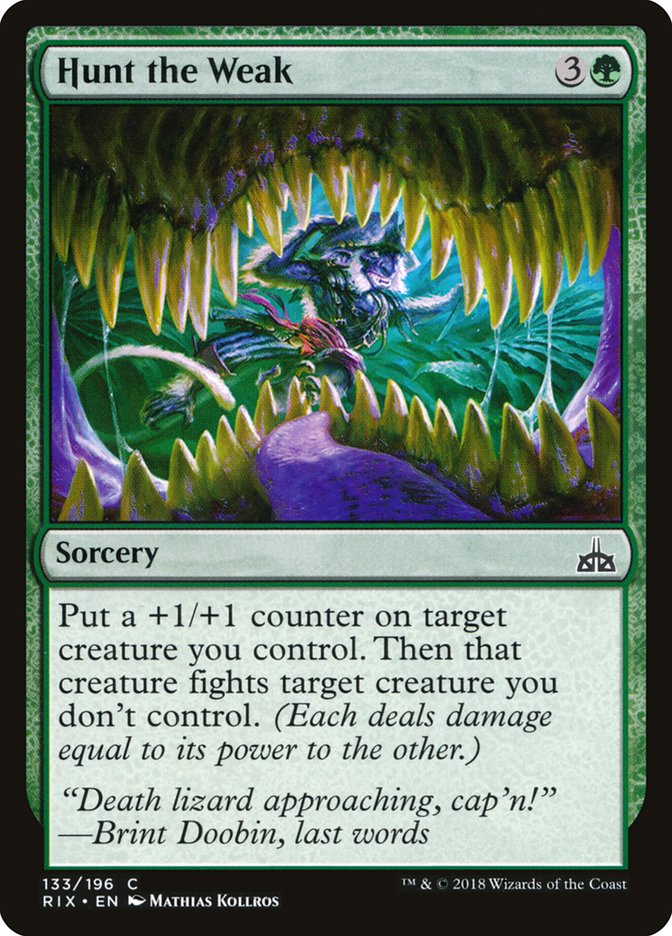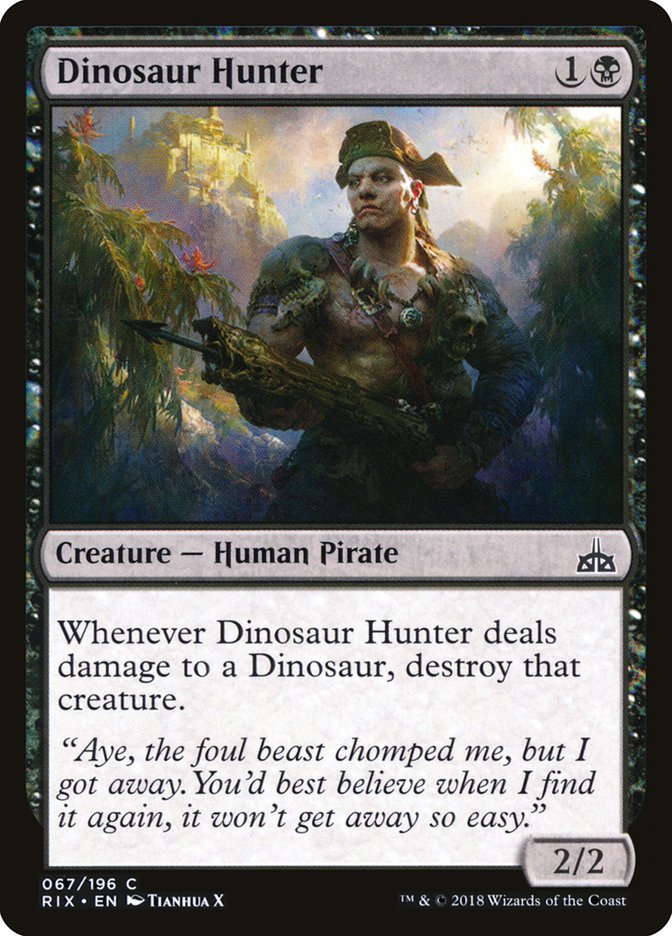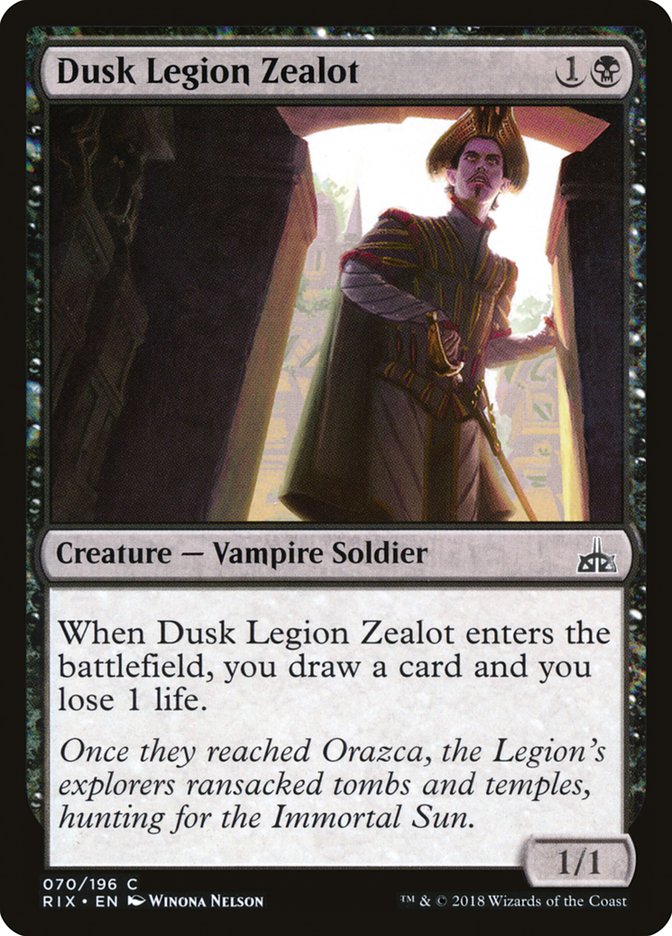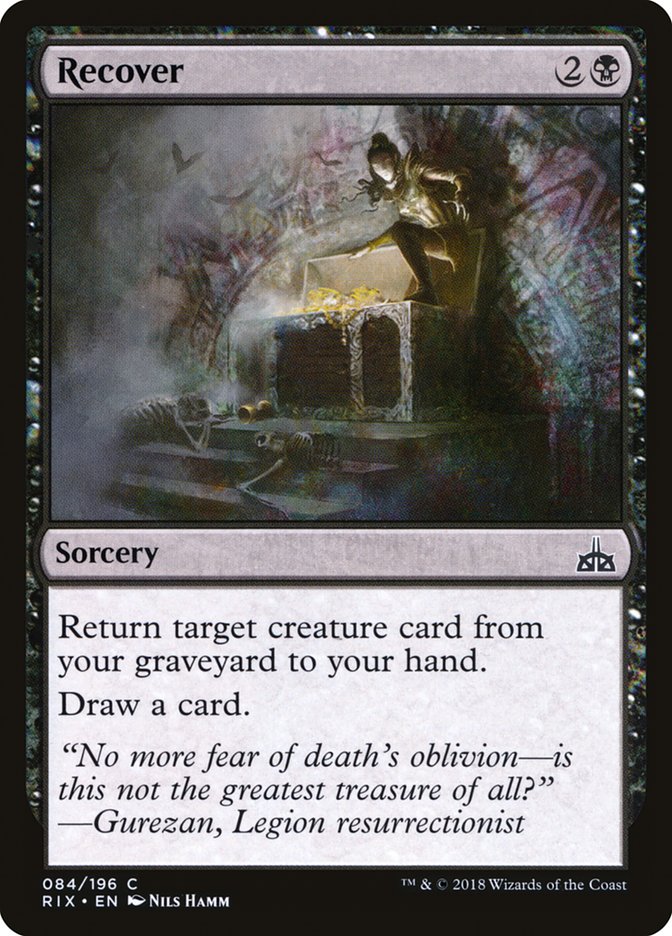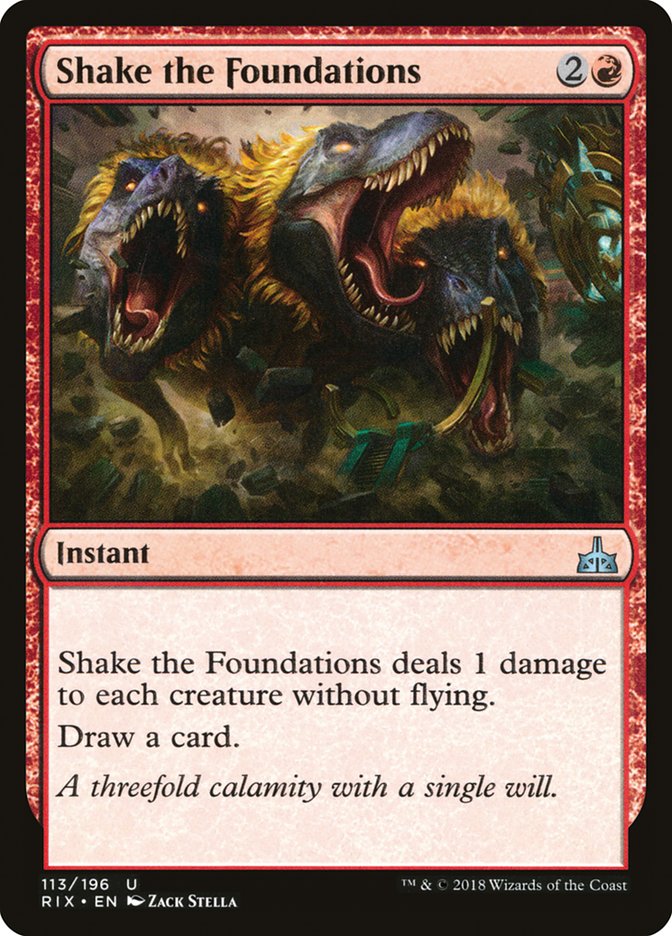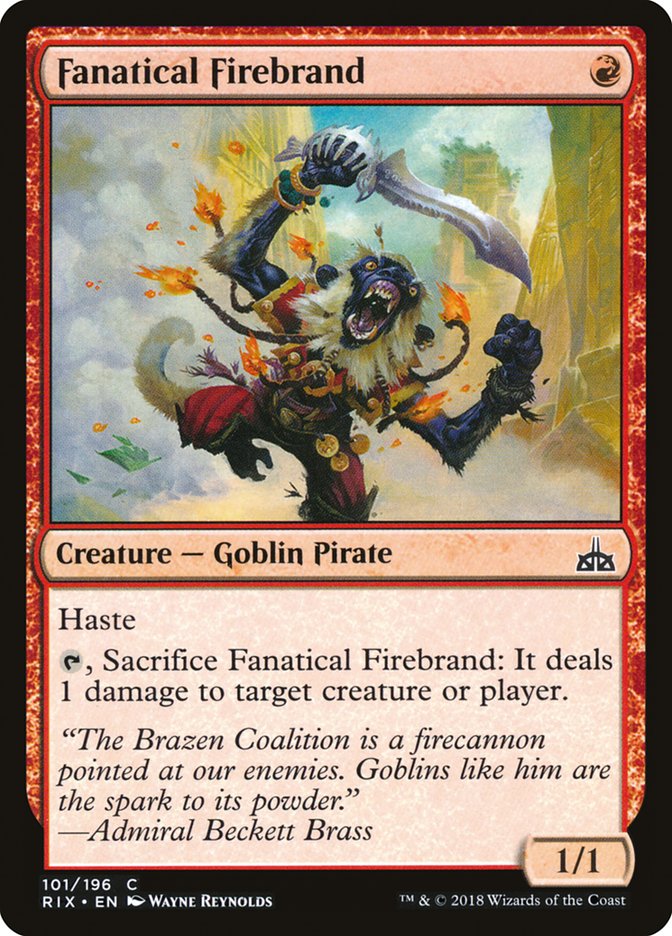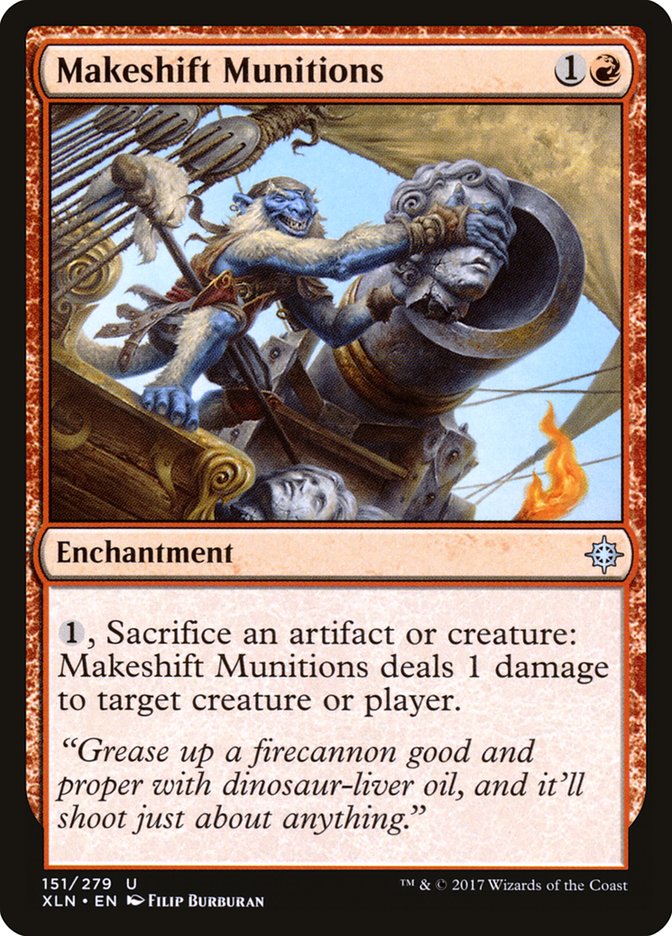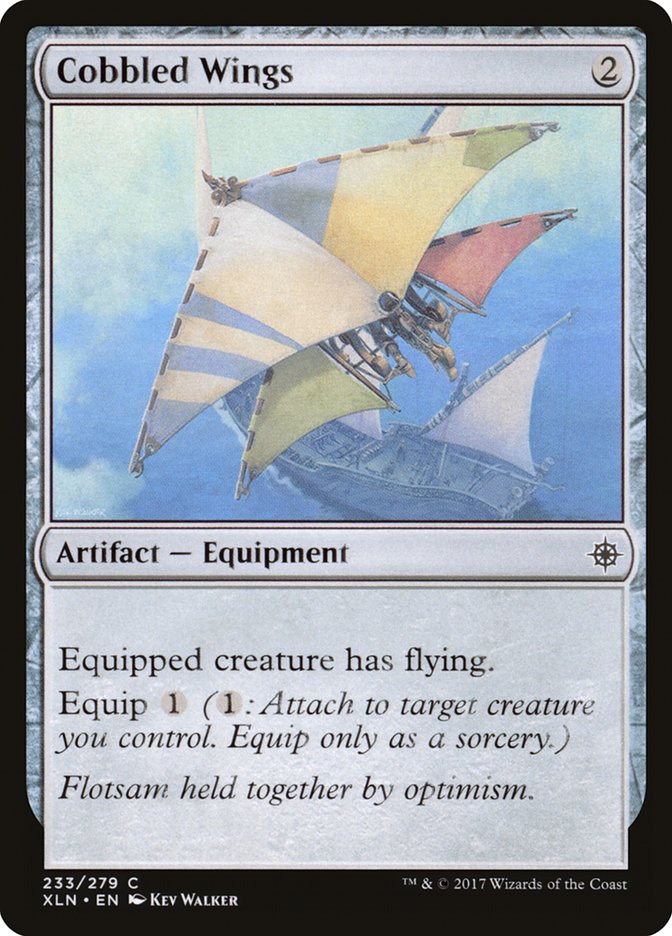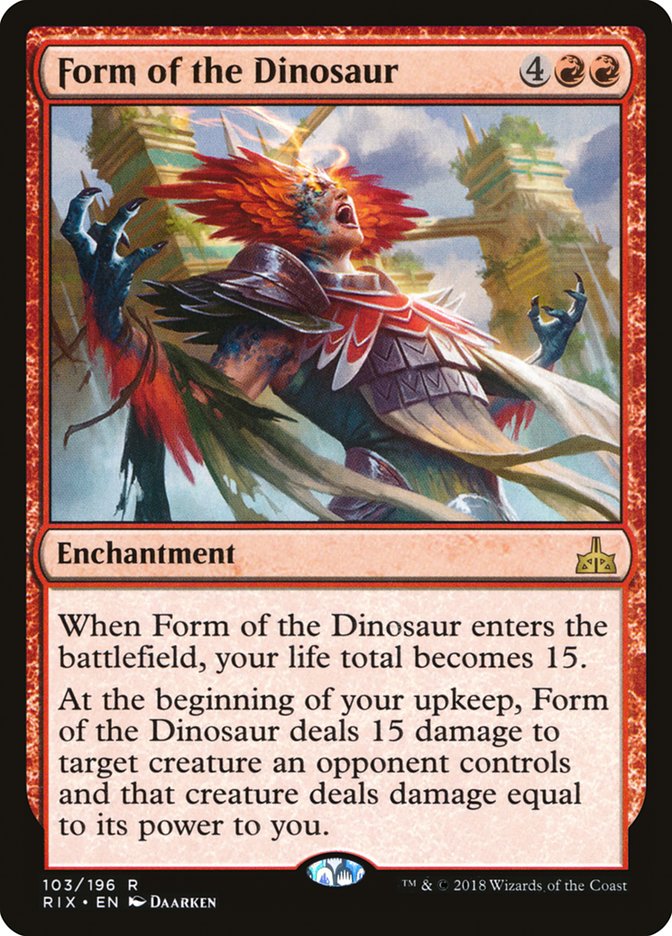Instead of the usual Drafting Digest today, I want to address the B/R
archetype in Rivals of Ixalan. I feel like the majority of the
world has missed the mark; B/R is not best suited as a Pirate aggro deck
(although that deck exists). The most consistent and powerful version of
B/R is actually a midrange deck. As an anecdote, I am 31-3 across twelve
drafts with the archetype and have spent time theory-crafting and tuning my
building approach and pick order. I’m not saying that this archetype is
superior to the rest; however I do believe it is quite good when approached
properly.
This article will describe what I’ve learned, what I prioritize, and some
tips on how to pilot the deck throughout.
The Plan
Every deck needs a plan. Sometimes these plans are linear and focused, and
other times decks adapt to each game and can play multiple roles. In Rivals of Ixalan, I’ve found the latter to yield more success.
There are a variety of cards that invalidate certain strategies, and if
your deck is linear in that regard, you just get crushed — which is one
of the reasons I think the aggressive decks don’t have as much stock in
this format as appeared on first glance.
My successful B/R decks are a combination of three things (in no particular
order):
A reasonable amount of interaction/removal.
Threats that end the game quickly (e.g. Dusk Charger, Charging Tuskodon).
Flood-protection and cards that help grind out the game (e.g. Pirates
Pillage, Recover, Rummaging Goblin).
In practice, I have observed that this yields the following plan: exhaust
your opponent’s resources. Trade aggressively, whether in combat or with
removal. The other grindy decks win slowly once they’ve planted their
advantage; however, this one wins quickly given the hard-hitting threats.
Whittle down resources over time and attempt to create a window where you
can turn the corner. This often is done with a timely Recover.
It’s also important to note that this deck doesn’t entirely ignore the
pirate creature-type. Given how important cards like Recover are, March of
the Drowned can be quite good in the deck as well. But that’s not it when
it comes to tribal cards.
Since some of the creatures that end up in the deck are Pirates, Dire Fleet
Neckbreaker and Buccaneer’s Bravado can still be potent cards. In fact,
having access to these potentially aggressive cards allows B/R midrange
decks to be flexible. I’m almost never trying to slant the curve towards an
aggressive deck, but you can still curve out and hit hard, even if that
isn’t plan A.
With all this in mind, before I get into how to draft the deck, take a look
at two decks that resulted in trophies to get a good idea what a good
version looks like:
Creatures (15)
- 1 Rummaging Goblin
- 1 Sun-Crowned Hunters
- 1 Deadeye Tormentor
- 1 Raptor Hatchling
- 1 Dire Fleet Interloper
- 1 Fathom Fleet Firebrand
- 1 Storm Fleet Pyromancer
- 1 Dusk Charger
- 1 Swaggering Corsair
- 1 Forerunner of the Empire
- 1 Dusk Legion Zealot
- 1 Fanatical Firebrand
- 1 Dinosaur Hunter
- 1 Charging Tuskodon
- 1 Mausoleum Harpy
Lands (17)
Spells (8)

Creatures (15)
- 1 Captain Lannery Storm
- 1 Sun-Crowned Hunters
- 1 Skittering Heartstopper
- 1 Captivating Crew
- 1 Fathom Fleet Cutthroat
- 1 Frenzied Raptor
- 1 Storm Fleet Pyromancer
- 1 Rekindling Phoenix
- 2 Dusk Legion Zealot
- 1 Sun-Collared Raptor
- 1 Sun-Crested Pterodon
- 2 Dinosaur Hunter
- 1 Mausoleum Harpy
Lands (16)
Spells (9)

The Draft
While there is certainly a shell for this midrange deck at common, one of
the best things about B/R is the amount of powerful uncommons you have
access to such as Ravenous Chupacabra and Reckless Rage. Starting off the
draft with either powerful cards, or the good common removal, and following
through with one of the colors being open is generally how to end up in the
deck. But it’s not as commonly drafted because people have an aversion to
the color combination. Consider a draft that started with Forerunner of the
Empire into Bombard.
Plenty of players would rather follow that up with Hunt the Weak than
Impale. This is not only because players view B/R as an inferior archetype
but also believe that Forerunner of the Empire is optimized in R/G and not
B/R. Forerunner of the Empire is surprisingly great in B/R. It helps search
for one of your threats, and clearing up little bodies is very useful if
you’re trying to trade resources, as there are a good number of creatures
in this format (e.g. Jungleborn Pioneer, Paladin of the Bloodstained) that
come with pesky little tokens. Personally, I would take Impale in this
situation, but both are completely justifiable.
But the more important question is: Once I’m B/R, what do I prioritize?
The deck must be cohesive. This means, first and foremost, that you need to
prioritize components based on scarcity (which is a good way of thinking
about drafting plenty of decks). Threats are the most replaceable, so while
Charging Tuskadon is a great way to end the game quickly, I’m not snapping
it up over a removal spell.
This decision gets more complicated when it comes to the flood-protection
cards. Charging Tuskadon is not only a better card (in a vacuum that is)
than both Recover and Pirate’s Pillage, but these spells can, and do,
wheel. This sort-of pick often depends on what you already have access to.
Do you have some Dusk Chargers already but no Recovers? How about the other
way around. Drafting this deck is about balancing what you need to properly
grind out the game and then turn the corner.
The last priority to be aware of when drafting this deck is the low-end of
your curve. How highly should you value two-drops, and which ones?
Personally, I’m of the opinion that you don’t want too many two-drops in
your Rivals of Ixalan decks. They get outclassed quickly, and I
want to maximize the number of relevant cards per matchup. Nevertheless,
it’s important to not be cold on the draw to your opponent curving out. I
don’t particularly love Goblin Trailblazer, so my two-drops often consist
of Dinosaur Hunter and Dusk Legion Zealot. And I’m usually looking to have
four or five two-drops.
Dinosaur Hunter plays an important role. Not only can it trade with some
early aggression such that you can save removal spells for better threats,
but it can keep threats at bay that cards like Bombard can’t handle. It
also enables an aggressive role when you curve out since it attacks much
better than a card like Dusk Legion Zealot.
This doesn’t mean the Hunter is more important than the Zealot though. In
fact, I take Dusk Legion Zealot over Dinosaur Hunter. This is because there
aren’t many cards that fill the same role as the Zealot. It lets you
mulligan well, provides a nice speed bump, and helps towards ascend. It
even can improve the stock of cards like Sadistic Skymarcher. All of these
little things add up to a card I’m happy to include in multiples.
Cards and Combos
Outside of the general philosophy of drafting the deck, there are specific
combinations of cards to look out for. There are obviously powerful ones,
such as Needletooth Raptor and Forerunner of the Empire, but there are also
less intuitive/powerful ones. Here are examples of cards that have value in
this archetype that you may not have thought about. The list isn’t
exhaustive, of course, but hopefully it’ll get you thinking the right way
about innovation within the archetype.
This may be my favorite combination of cards for this deck because you can
get both pretty late in the draft. The concept is as follows: Sun-Collared
Raptor is pretty much only good in the late game. So trade off with it if
you can; maybe discard it to a Rummaging Goblin. Once each player has
exhausted their resources, getting back the Raptor with Recover ends the
game quickly because you should have plenty of lands.
I’ve won a lot of games off the back of these two cards together, and you
don’t even need to waste a pick. You’ll get Sun-Collared Raptor with three
cards left in the pack. It sounds odd at first, but I promise it’s the real
deal!
This deck actively wants the card Shake the Foundation for a similar reason
to that of Forerunner of the Empire. And once you have a couple of cards
with the ability to ping, Fanatical Firebrand becomes a good resource.
Cheap cards that can handle one-toughness creatures are good to have access
to, and helping cards like Forerunner of the Empire, Shake the Foundation,
Golden Demise, Dual Shot, and so on pick off higher-toughness threats is
relevant. Plus, if you have Dire Fleet Neckbreaker, the little Firebrand
can be an actual threat.
Makeshift Munitions is another interesting pinger for these kinds of decks.
While it doesn’t always fit, it combines with cards like Needletooth Raptor
and Tilonalli’s Summoner to put a game completely out of reach. Combine it
with some other pinging effects and cards like Recover to help mitigate the
downside and it can be a solid inclusion.
This is a card that I’m often on the lookout for going into pack three with
these decks. Sending Dusk Charger to the air is nothing to scoff at.
Honestly, it’s not much more than that, but just a reminder that this card
is irreplaceable and often good. Take it higher than you do.
Orazca Relic provides B/R with an effect it doesn’t get access to. It
almost feels like a U/G card in your B/R deck. While it’s not a card I
prioritize, it is a card I play more often than I expected. Given that the
deck is often top-heavy, the ramp does matter, and the life gain and card
can be enough to eek out above your opponent on resources.
Plus, combining it with a card like Forerunner of the Empire can be pretty
awesome. One of the downsides of Forerunner is that your opponent can see
it coming. But if you have a cheap dino, say Raptor Hatchling, you can
search for the dinosaur and pop the Relic immediately for a good old
Pyroclasm!
Now, this card is quite controversial. I will start by saying that this
card does not belong in every version (or even most versions) of
this deck. But it lets you play with your life total in a way no other card
does. And it fits quite well with the plan of exhausting resources and
turning the corner quickly. There are situations that this deck gets into
where this card puts a game that looked close completely out of reach. And
the lifegain stabilizes in a very relevant way.
I will note that, when I play this card, I usually want multiple cards that
gain life such as Orazca Relic, Moment of Craving, Mark of the Vampire, or
even a splashed copy of Squire’s Devotion. Combining life gain with Form of
the Dinosaur is pretty much game over.
So next time you fire up a draft, remember that B/R is a solid archetype without as much of a Pirate focus as you would think. Take good
cards and grind your opponents to dust!


